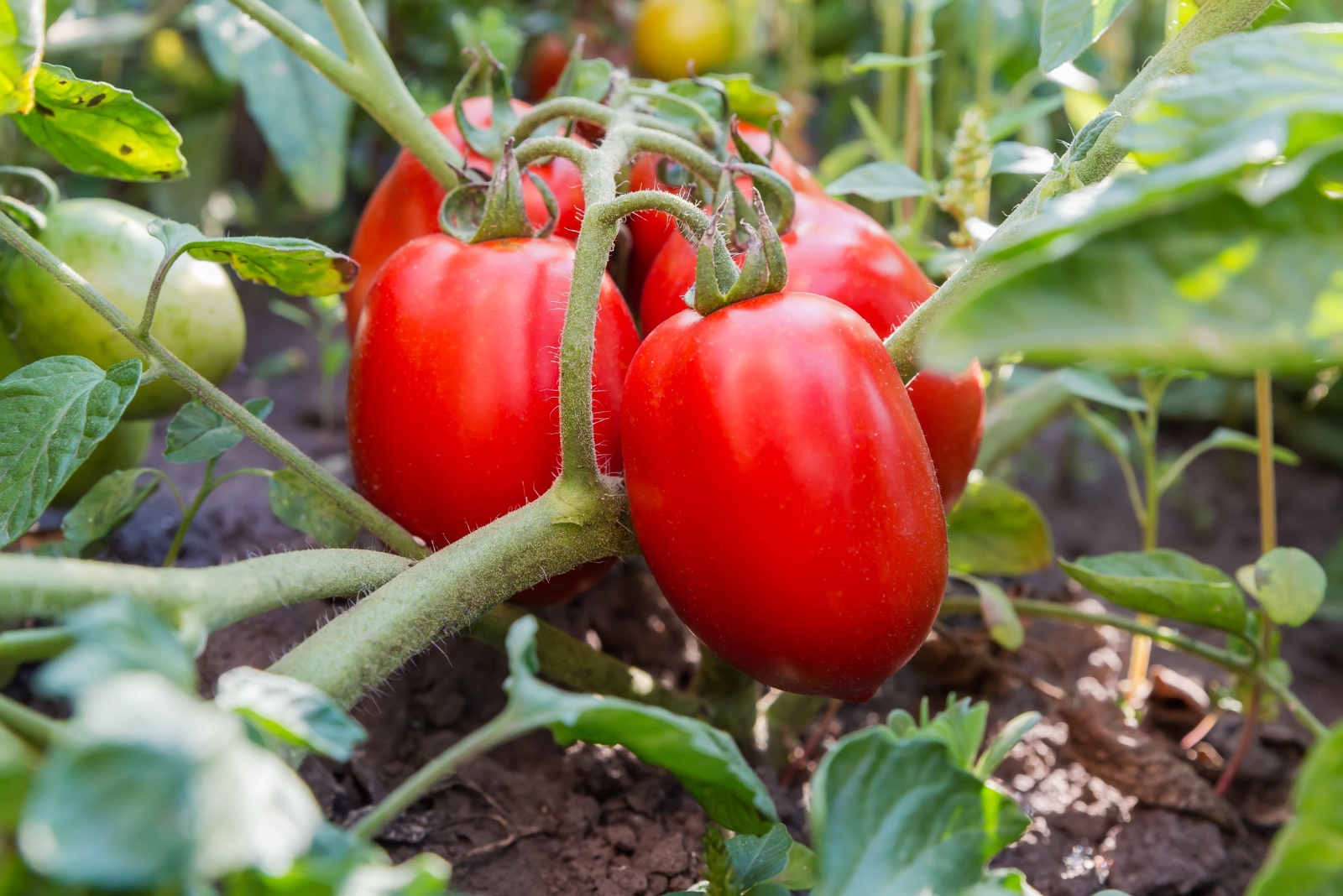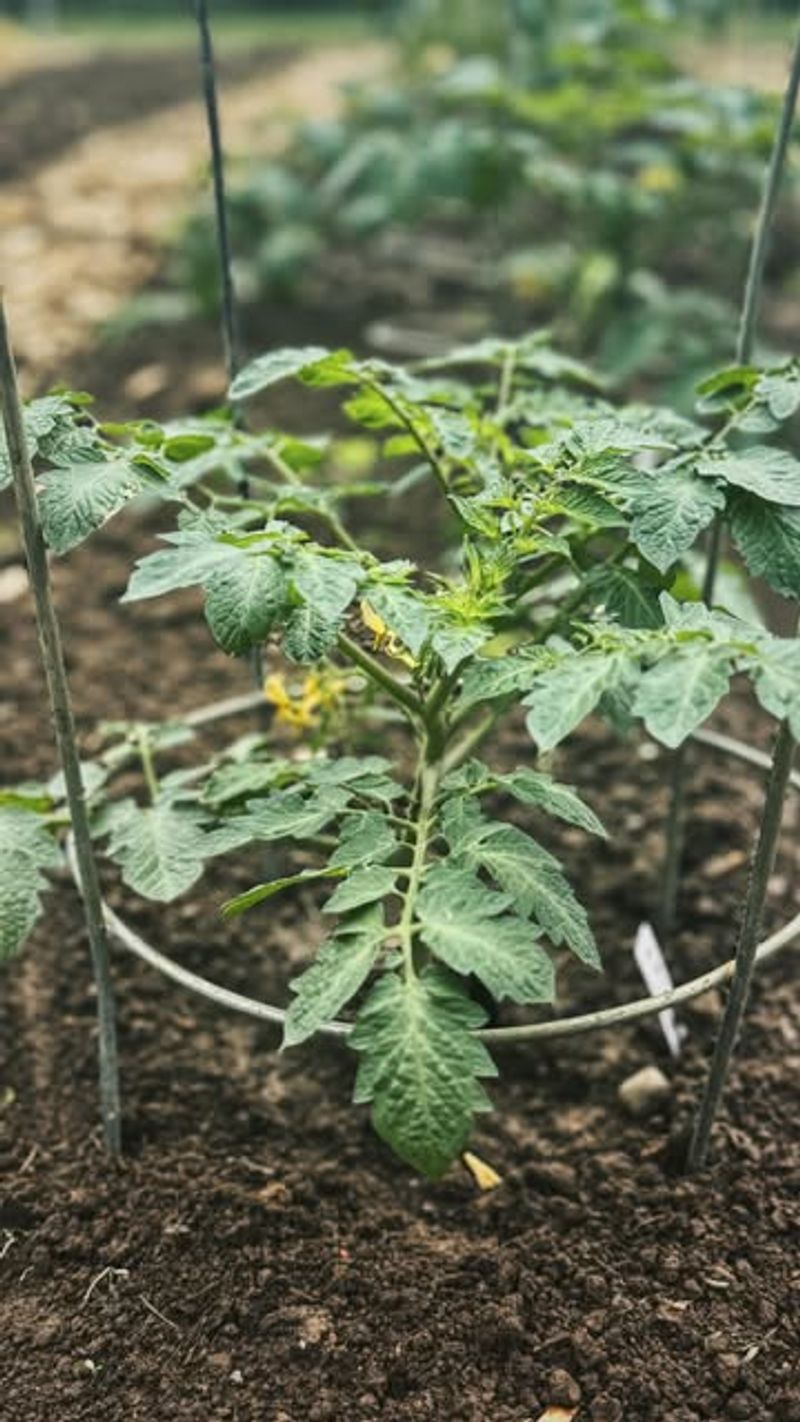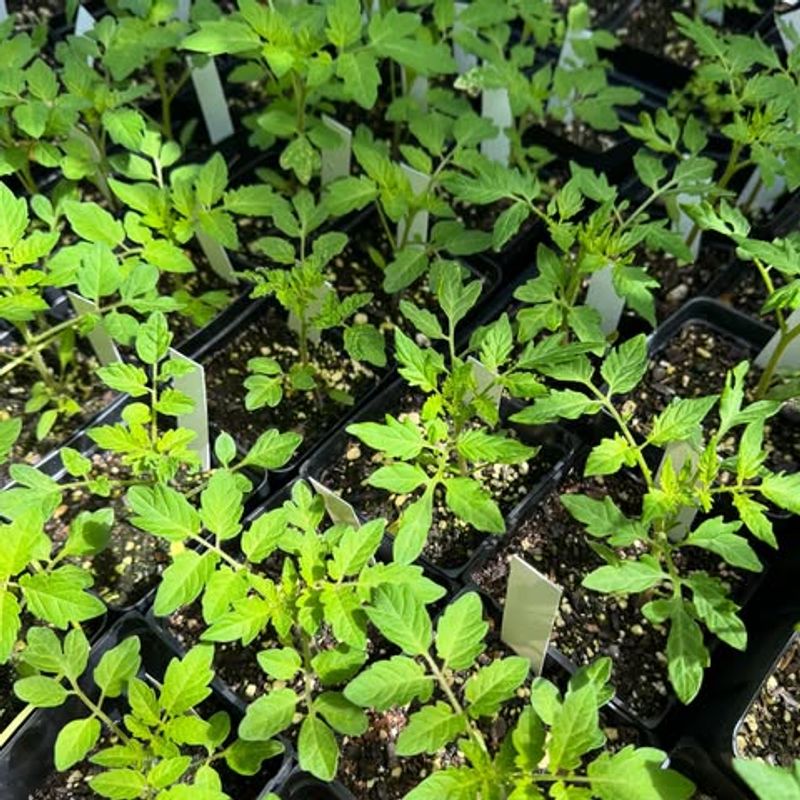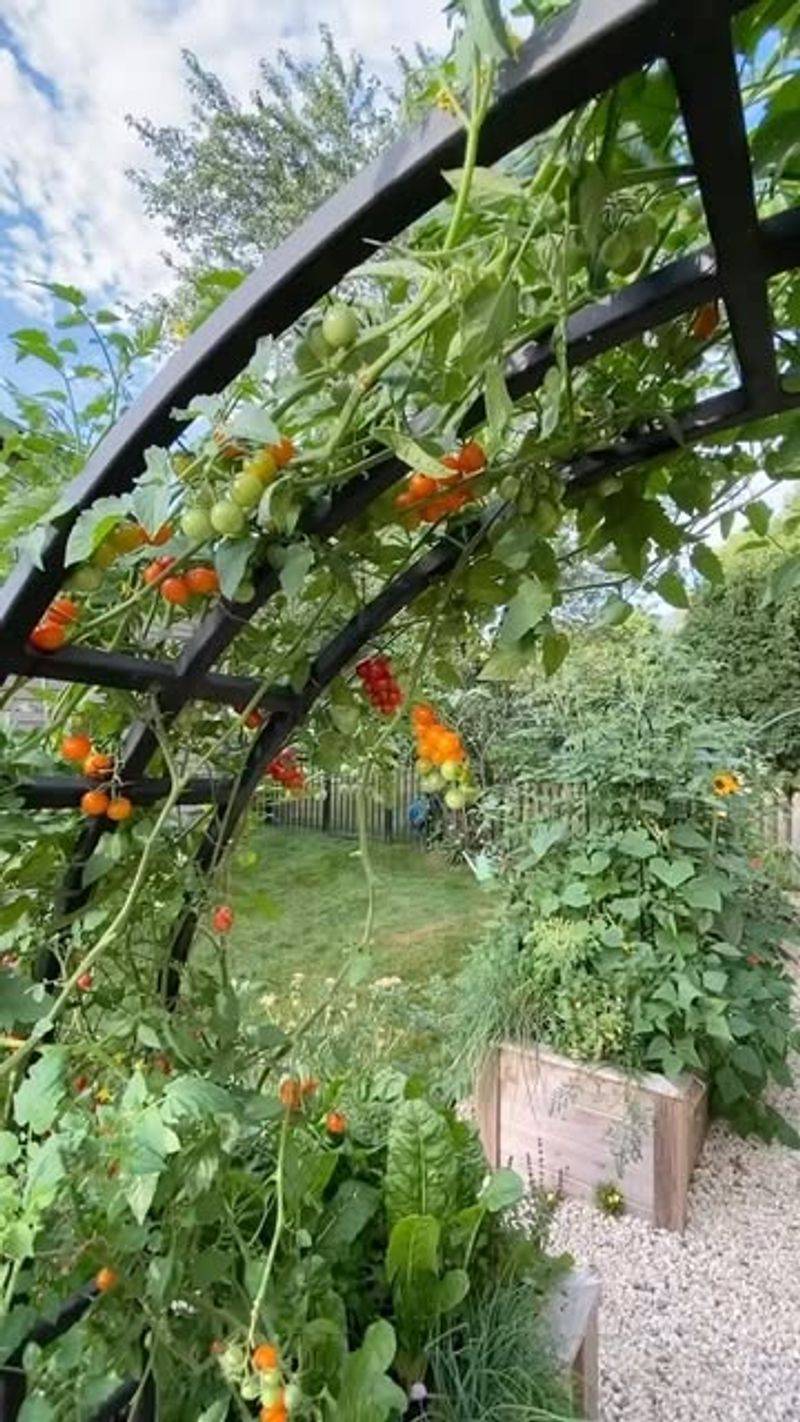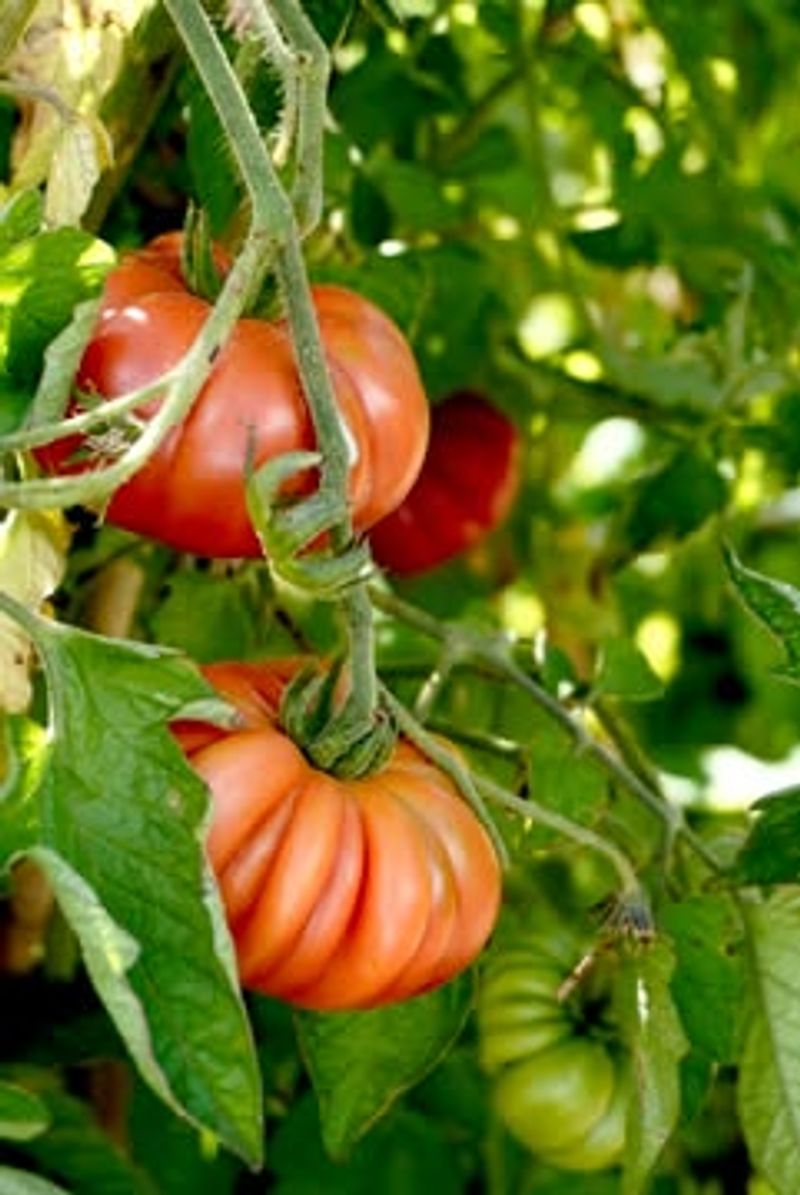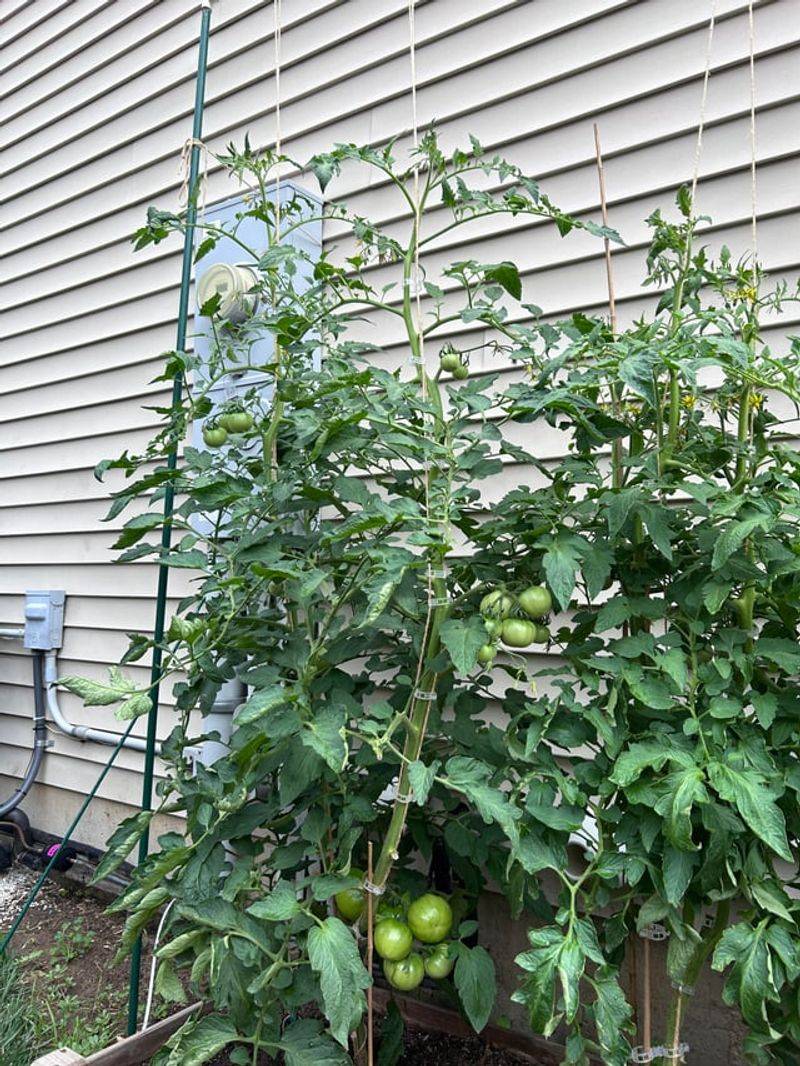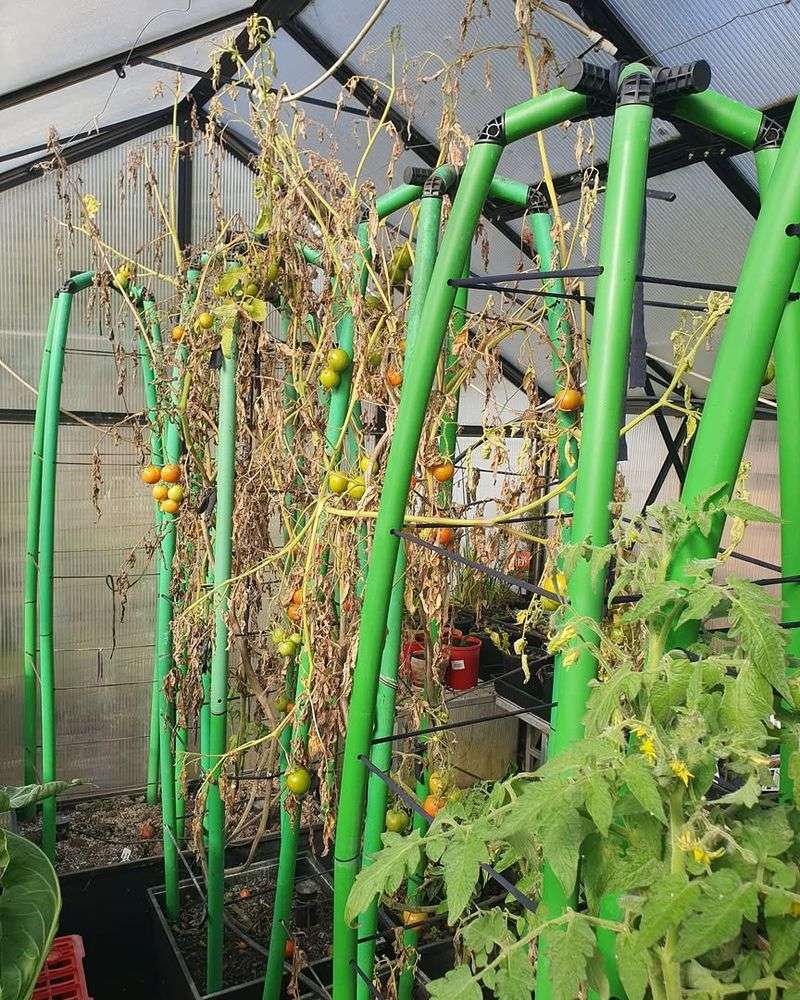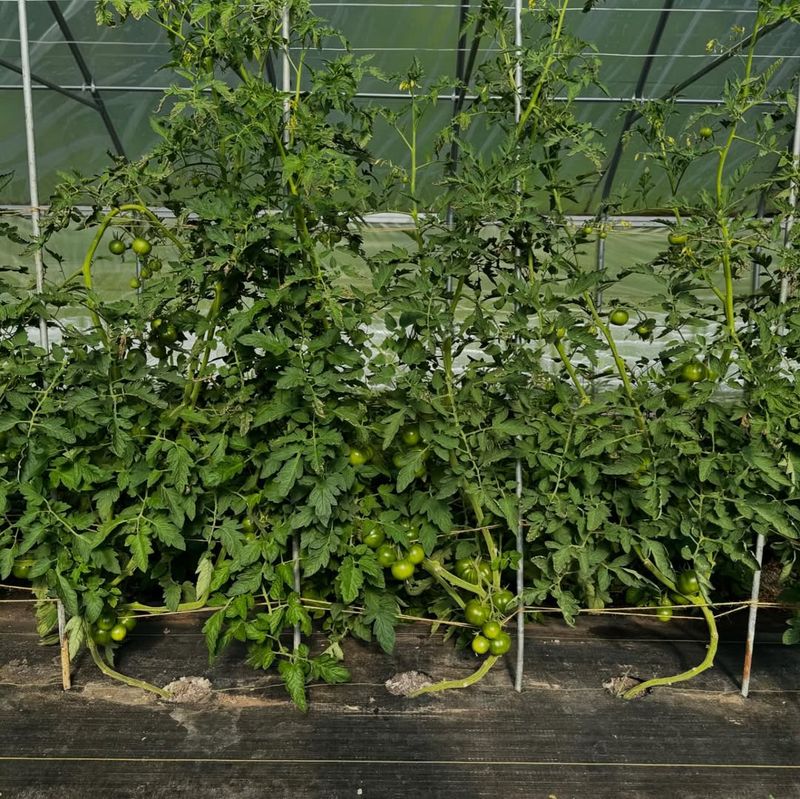I’ve made almost every tomato-planting mistake possible in Nebraska, so this topic hits close to home. Some locations look perfect until the plants start acting miserable.
Once I figured out what areas to avoid, my harvests finally improved. Let me share the spots I definitely skip now.
1. Low-Lying Areas That Collect Water
Waterlogged soil spells trouble for tomato roots. When you plant in spots where rainwater puddles and sits for hours, your tomatoes struggle to breathe properly.
Nebraska gardeners know spring rains can be heavy, making drainage crucial. Roots sitting in soggy soil become weak and susceptible to root rot diseases.
Choose higher ground where water flows away naturally. Your tomatoes will reward you with stronger root systems and healthier plants that can handle Nebraska’s unpredictable weather patterns throughout the growing season.
2. Shaded Spots Under Large Trees
Tomatoes are sun-loving plants that crave at least six to eight hours of direct sunlight daily. Planting beneath tree canopies creates competition for light that your tomatoes simply cannot win.
Trees also compete aggressively for water and nutrients in the soil. Their extensive root systems steal resources your tomato plants desperately need.
Nebraska summers provide excellent sunshine, so take advantage by choosing open areas. Your harvest will be significantly more abundant when plants receive full sun exposure.
3. Areas With Compacted Clay Soil
Clay-heavy soil acts like concrete when it dries out, making root penetration nearly impossible. Your tomato roots need loose, well-draining soil to spread and establish themselves properly.
Compacted ground prevents proper air circulation around roots and traps excess moisture. Many Nebraska gardens naturally have clay-rich soil that requires amendment before planting.
Work in compost and organic matter generously to improve texture. Breaking up compacted areas before planting gives your tomatoes the foundation they need for vigorous growth.
4. Spots Near Black Walnut Trees
Black walnut trees release a chemical called juglone that acts like poison to tomatoes and many other plants. Even if the tree seems far away, its roots can extend outward up to 50 feet or more.
Nebraska has plenty of these beautiful native trees, but they’re terrible neighbors for vegetable gardens. Tomatoes planted within this zone will wilt and struggle despite your best care efforts.
Keep your tomato patch at least 60 feet away from any black walnut. This simple distance rule prevents heartbreaking losses.
5. Wind-Exposed Open Fields
Nebraska’s prairie winds can be relentless, especially during spring and summer storms. Constant wind batters tomato plants, breaking stems and stripping away blossoms before they can set fruit.
Wind also dries out soil rapidly, forcing you to water more frequently. Plants expend energy just staying upright instead of producing tomatoes.
Position your garden near buildings, fences, or shrubs that provide natural windbreaks. Protected plants grow taller, produce more fruit, and require less maintenance throughout the season in Nebraska’s breezy conditions.
6. Locations Where Nightshades Grew Previously
Planting tomatoes where potatoes, peppers, or eggplants grew last year invites disease problems. These nightshade family members share similar pests and soil-borne diseases that linger season after season.
Rotating crops breaks this cycle and keeps your garden healthier. Nebraska’s growing season is short enough without battling preventable diseases.
Wait at least three years before planting nightshades in the same spot again. This simple rotation strategy protects your investment and ensures better yields with fewer chemical interventions needed.
7. Areas Near Painted or Treated Wood
Older pressure-treated lumber and painted wood can leach harmful chemicals into surrounding soil. Arsenic, chromium, and lead from these materials contaminate the ground where your tomatoes will absorb nutrients.
Many Nebraska gardeners use recycled materials for raised beds without realizing the risks. While economical, these choices can introduce toxins directly into your food supply.
Stick with untreated cedar, food-safe composite materials, or stone for garden borders. Your tomatoes—and your family’s health—deserve clean growing conditions free from chemical contamination.
8. Spots With Poor Air Circulation
Tucking tomatoes into tight corners between buildings or fences creates stagnant air pockets. Without proper airflow, humidity builds up around leaves, creating perfect conditions for fungal diseases like blight.
Nebraska’s humid summer nights already challenge tomato growers enough. Adding poor ventilation multiplies these problems significantly.
Space plants adequately and choose open locations where breezes can move freely through your garden. Healthy air movement keeps foliage dry, reduces disease pressure, and results in stronger plants that produce abundantly.
9. Sites With Contaminated or Unknown Soil History
Gardens near old buildings, former industrial sites, or along busy roads may harbor hidden soil contaminants. Lead, petroleum products, and other pollutants accumulate over decades and don’t disappear easily.
Nebraska has many older neighborhoods where soil history remains unclear. Testing before planting gives you peace of mind about what’s feeding your tomatoes.
Contact your local extension office for affordable soil testing services. If contamination exists, use raised beds with fresh soil instead of risking your family’s health with tainted produce.

